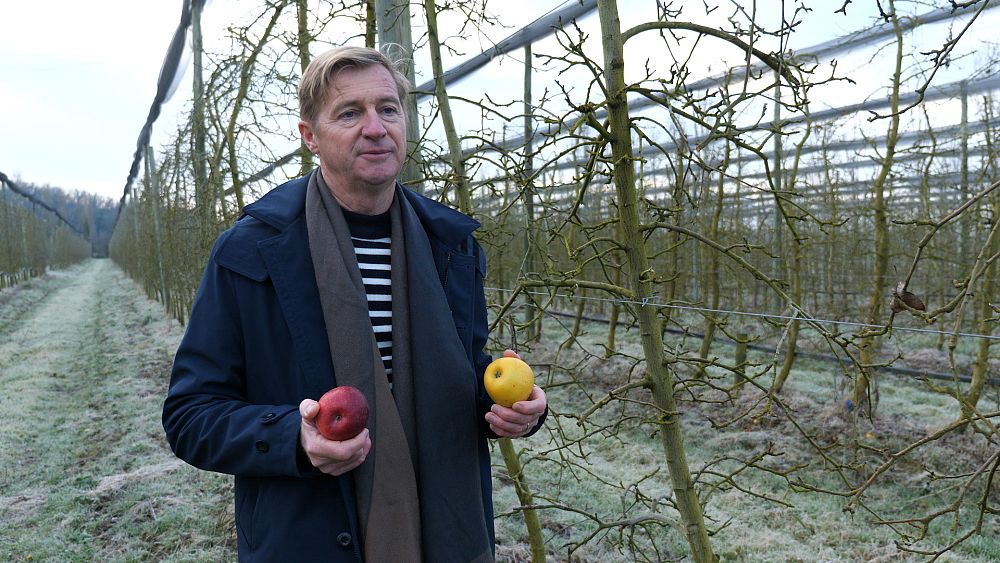
In this episode of Climate Now we review the latest Copernicus Climate Change Service data showing warm temperature anomalies for January and highlighting the figures for sea ice in the Arctic and Antarctic. Our report focuses on the search to find fruit trees better adapted to Europe’s warmer winters.
Warmer winters are a growing problem for fruit producers. Many European varieties need a long cold winter to produce good fruit in summer, and climate change is disrupting their natural cycles.
In one orchard near Bordeaux in southwest France, plant biologist at the French National Research Institute for Agriculture, Food and the Environment, Bénédicte Wenden, has been searching for varieties of apple, cherry, apricot and peach that are able to thrive in a warmer world.
Her long-term goal is to identify the traits in different trees that can allow us to create varieties for the year 2050 and beyond.
“The problem we have now is that with the increase in winter temperatures, the fruit trees’ requirements for cold are no longer met,” Bénédicte told Climate Now. “This means that there is no longer enough cold in winter, and so flowering is irregular, with major problems in production.”
Bénédicte Wenden
Plant biologist
This is a long-term issue. Average winter temperatures in Europe have risen since the 1950s, and the average is projected to rise for the decades to come.
The latest figures would appear to be in line with that trend. Data from the Copernicus Climate Change Service shows that Europe has just had its third warmest January on record, with temperatures for the month 2.2 degrees Celsius above the 1991-2020 average.
On a global scale, there was a lot of variability in January. In northern Russia, Afghanistan and Pakistan were colder than average, whereas in the eastern United States, Canada and Europe temperatures were higher than usual.


Damage limitation: Switching up varieties of fruit
At her laboratory, Bénedicte exposes sample branches to the warm conditions of spring as she seeks to understand how the trees respond to different environmental conditions on a genetic level.
Her goal is to identify different traits and ultimately develop varieties of fruit tree that can offer the right mix for the future, although her work is painstaking and may not result in a perfectly-adapted new variety for 30 years.
But according to her, there is no simple solution.
“My opinion is that it is better to have a mix of varieties. [One] variety is very good when there are mild winters but no frost. [Another] will be good if you have cold winters with frost. So it is better to have a mix of varieties to guarantee production.”
“It complicates things for the producers, but it gives them a cushion in case of variations in the climate,” she added.
Guaranteeing production is one of the biggest challenges facing organic grower Philippe Sfiligoï, who lost about 60 per cent of his apple crop to late frosts two years in a row. He told Climate Now that he fears the same happening again this year.

“If it’s really warm next week, the risk is that the tree will actually start to grow,” Philippe revealed. “And the issue is that when a tree starts, it won’t stop. In other words, it has started its cycle. So it can slow down a little bit, but it won’t be able to stop. So if we have a frost in a few weeks’ time it’s over.”
There’s no ideal solution, but Philippe is already switching varieties and preparing for a warmer planet on his farm, called the Vergers Bio des Pruneraies.
“[The] Opal…can tolerate having a little less cold in the winter. The Dalinette…stands up very well to very hot summers. So little by little, we are actually adapting all our orchards to this climate change.”
Journalist • Jeremy Wilks
Video editor • Jean-Christophe Marcaud
Additional sources • Copernicus Climate Change Service

